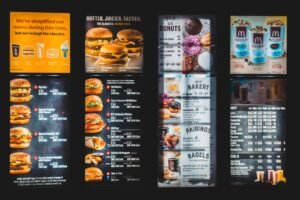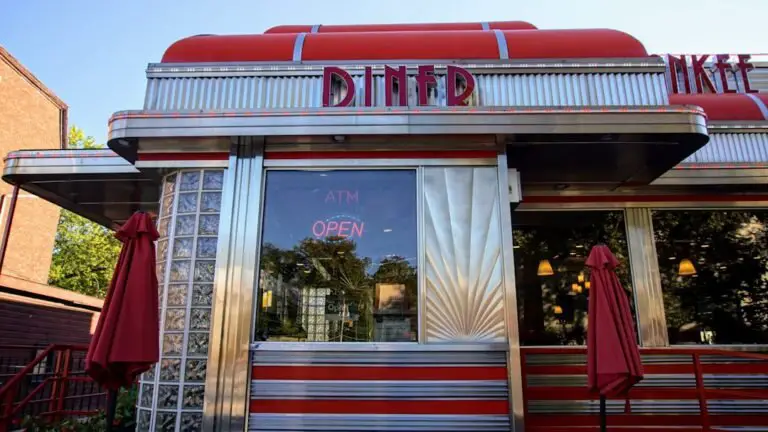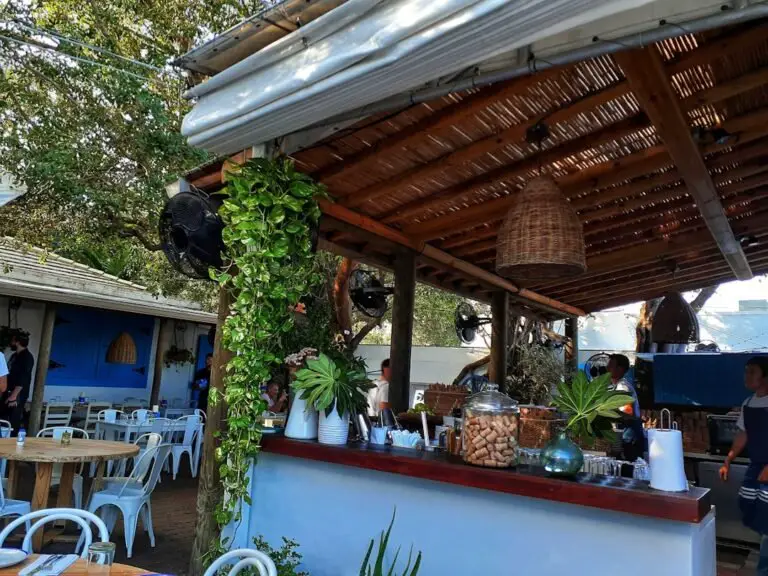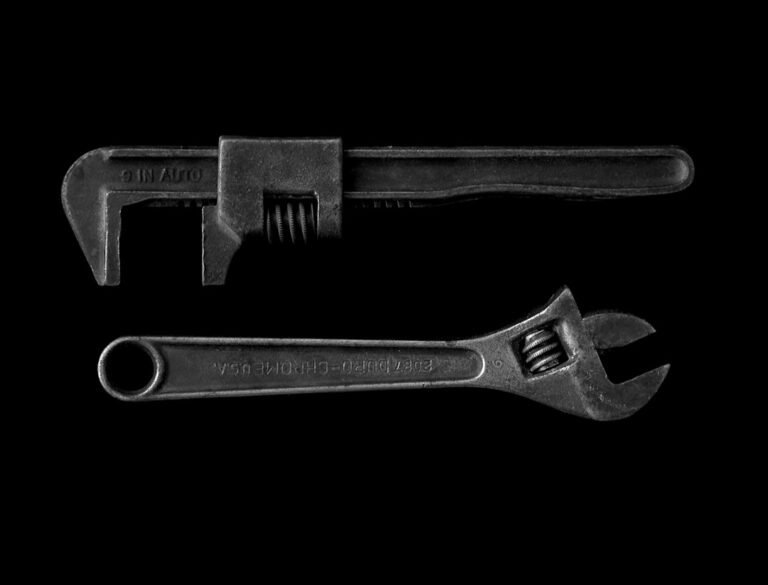The kitchen is the core of any restaurant operation, and proper equipment is crucial for maintaining efficiency and quality. Essential items include commercial stoves, ovens, refrigeration units, and food processors. These tools significantly impact the speed and quality of food preparation.
For instance, a high-quality commercial oven ensures even and efficient cooking, while a powerful food processor enables quick and consistent chopping, slicing, and dicing of ingredients. Investing in durable refrigeration units is vital for preserving ingredient freshness and food safety. Specialized equipment such as grills, fryers, and steamers allow chefs to create diverse dishes with precision and speed.
A high-quality grill can impart smoky flavors to meats and vegetables, while a commercial fryer ensures perfect crispiness in fried foods. In addition to cooking equipment, proper storage and organization tools like shelving units, food containers, and labeling systems streamline kitchen operations and improve ingredient accessibility. Investing in high-quality kitchen equipment is essential for restaurants aiming to maintain high standards of food quality and operational efficiency.
Key Takeaways
- Invest in high-quality kitchen equipment to ensure efficiency and consistency in food preparation.
- Choose a point of sale system that is user-friendly and integrates with other software for seamless operations.
- Utilize inventory management software to track stock levels, reduce waste, and optimize ordering processes.
- Use staff scheduling and communication tools to streamline employee management and improve internal communication.
- Implement online ordering and delivery platforms to reach a wider customer base and increase revenue streams.
- Utilize marketing and social media management tools to create and schedule engaging content, and analyze performance metrics.
- Implement customer feedback and review management systems to gather and respond to customer input, and improve overall service quality.
Point of Sale System
A point of sale (POS) system is a crucial tool for any restaurant as it helps streamline the ordering and payment process, as well as provides valuable data for business analysis. A modern POS system can handle various functions such as processing orders, managing inventory, tracking sales, and generating reports. With the ability to customize menus, process payments quickly and accurately, and integrate with other software systems such as accounting and inventory management, a POS system can significantly improve the overall efficiency of a restaurant.
Additionally, a POS system can provide valuable insights into customer behavior and preferences, allowing restaurants to tailor their offerings and marketing strategies accordingly. Moreover, a POS system can also help with staff management by tracking employee performance, managing shifts, and monitoring sales trends. With features such as customizable user permissions and real-time reporting, restaurant owners and managers can have better control over their operations and make informed decisions to improve profitability.
Furthermore, with the rise of contactless payment options and online ordering, a modern POS system should also be able to integrate with these platforms seamlessly to provide a convenient and efficient experience for both customers and staff. Overall, investing in a reliable and feature-rich POS system is essential for any restaurant looking to improve operational efficiency, customer service, and business insights.
Inventory Management Software

Effective inventory management is crucial for any restaurant to control costs, minimize waste, and ensure that ingredients are always available when needed. Inventory management software can help streamline the process of tracking stock levels, ordering supplies, and managing vendor relationships. With features such as real-time tracking, automated reordering, and customizable alerts for low stock levels, inventory management software can help reduce the risk of running out of essential ingredients or overstocking items that may go to waste.
Additionally, by providing insights into usage patterns and cost analysis, inventory management software can help restaurants make informed decisions about menu planning and pricing. Furthermore, inventory management software can also help with compliance and food safety by tracking expiration dates, managing recalls, and ensuring that ingredients are stored properly. With the ability to integrate with other systems such as POS and accounting software, inventory management software can provide a comprehensive view of the restaurant’s operations and financial health.
Moreover, by providing detailed reports on usage patterns, waste levels, and supplier performance, inventory management software can help identify areas for improvement and cost-saving opportunities. Overall, investing in inventory management software is essential for any restaurant looking to optimize their supply chain, reduce costs, and improve overall efficiency.
Staff Scheduling and Communication Tools
| Tool Name | Features | Price | Integration |
|---|---|---|---|
| Slack | Real-time messaging, file sharing, channels | Free, paid plans available | Integrates with many other tools |
| Microsoft Teams | Chat, video calls, file sharing, collaboration tools | Included in Microsoft 365 subscription | Integrates with Microsoft apps |
| When I Work | Scheduling, time clock, communication | Free trial, paid plans available | Integrates with payroll and POS systems |
Effective staff scheduling and communication are essential for any restaurant to ensure smooth operations and high-quality customer service. Staff scheduling tools can help managers create optimized schedules based on factors such as labor laws, employee availability, and anticipated customer traffic. With features such as shift swapping, time-off requests, and automated notifications, staff scheduling tools can help reduce scheduling conflicts and improve employee satisfaction.
Additionally, by providing real-time visibility into staffing levels and labor costs, these tools can help managers make informed decisions about resource allocation and budgeting. Moreover, communication tools such as messaging apps or employee portals can help streamline internal communication and ensure that staff members are informed about important updates or changes in real-time. With features such as group messaging, file sharing, and task assignment, communication tools can help improve collaboration and coordination among staff members.
Furthermore, by providing a centralized platform for sharing important documents such as training materials or company policies, communication tools can help ensure that all staff members have access to the information they need to perform their roles effectively. Overall, investing in staff scheduling and communication tools is essential for any restaurant looking to improve staff productivity, morale, and overall operational efficiency.
Online Ordering and Delivery Platforms
The rise of online ordering and delivery has transformed the restaurant industry, making it essential for restaurants to have a strong online presence and seamless ordering experience. Online ordering platforms can help restaurants reach a wider audience and provide convenient options for customers to place orders from the comfort of their homes. With features such as customizable menus, order tracking, and secure payment processing, online ordering platforms can provide a user-friendly experience for customers while streamlining the order fulfillment process for restaurants.
Additionally, by integrating with POS systems and kitchen operations, online ordering platforms can help ensure that orders are processed efficiently and accurately. Furthermore, delivery platforms such as third-party delivery services or in-house delivery operations can help restaurants expand their reach and provide additional revenue streams. By providing features such as real-time tracking, delivery optimization, and customer feedback management, delivery platforms can help restaurants provide a seamless delivery experience for customers while optimizing delivery operations for efficiency.
Moreover, by providing valuable data on customer behavior and preferences, online ordering and delivery platforms can help restaurants tailor their offerings and marketing strategies to maximize customer satisfaction and loyalty. Overall, investing in online ordering and delivery platforms is essential for any restaurant looking to adapt to changing consumer preferences and capitalize on the growing trend of off-premise dining.
Marketing and Social Media Management Tools

In today’s digital age, having a strong online presence is crucial for any restaurant to attract new customers and engage with existing ones. Marketing and social media management tools can help restaurants create compelling content, manage social media accounts effectively, and track the performance of marketing campaigns. With features such as content scheduling, audience targeting, and performance analytics, these tools can help restaurants create a consistent brand image across various online channels while reaching their target audience effectively.
Additionally, by providing insights into customer engagement and sentiment analysis, marketing and social media management tools can help restaurants understand their audience better and tailor their marketing strategies accordingly. Moreover, these tools can also help with reputation management by monitoring online reviews and managing customer feedback effectively. By providing features such as review tracking, response management, and sentiment analysis, these tools can help restaurants maintain a positive online reputation while addressing any issues or concerns raised by customers promptly.
Furthermore, by integrating with other systems such as POS or customer relationship management (CRM) software, marketing and social media management tools can provide a comprehensive view of customer behavior and preferences to inform marketing strategies effectively. Overall, investing in marketing and social media management tools is essential for any restaurant looking to build brand awareness, attract new customers, and maintain a positive online reputation.
Customer Feedback and Review Management Systems
Customer feedback is invaluable for any restaurant looking to improve its offerings and customer experience. Customer feedback and review management systems can help restaurants collect feedback from various channels such as online reviews, surveys, or comment cards while providing tools to analyze this feedback effectively. With features such as sentiment analysis, trend tracking, and customizable surveys, these systems can help restaurants understand customer preferences better while identifying areas for improvement.
Additionally, by providing insights into customer satisfaction levels and sentiment trends over time, customer feedback management systems can help restaurants measure the impact of their efforts to improve customer experience. Moreover, these systems can also help with review management by providing tools to respond to reviews promptly while monitoring online reputation effectively. By centralizing reviews from various platforms such as Google My Business or Yelp into a single dashboard, review management systems can help restaurants stay on top of customer feedback while addressing any issues or concerns raised by customers in a timely manner.
Furthermore, by integrating with other systems such as POS or CRM software, customer feedback management systems can provide a comprehensive view of customer behavior and preferences to inform business decisions effectively. Overall, investing in customer feedback and review management systems is essential for any restaurant looking to prioritize customer satisfaction while maintaining a positive online reputation. In conclusion, the restaurant industry is evolving rapidly with technological advancements shaping the way businesses operate.
From kitchen equipment to customer feedback management systems, investing in the right tools is essential for any restaurant looking to stay competitive in today’s market. By leveraging technology effectively across various aspects of their operations, restaurants can improve efficiency, enhance customer experience, and drive business growth in the long run.
Check out this fascinating article about the historic Oscar nomination for “Anatomy of a Fall” by Justine Triet here. It’s always interesting to see how different industries, like the film industry, are recognized for their hard work and creativity.
FAQs
What are the essential tools for a restaurant?
Some essential tools for a restaurant include knives, cutting boards, pots and pans, kitchen utensils, food storage containers, and cleaning supplies.
What type of knives are commonly used in a restaurant kitchen?
Commonly used knives in a restaurant kitchen include chef’s knives, paring knives, serrated knives, and boning knives.
What are the important kitchen utensils for a restaurant?
Important kitchen utensils for a restaurant include spatulas, tongs, whisks, ladles, and serving spoons.
What types of pots and pans are necessary for a restaurant kitchen?
Necessary pots and pans for a restaurant kitchen include saucepans, stockpots, sauté pans, and frying pans.
What are the different types of food storage containers used in a restaurant?
Different types of food storage containers used in a restaurant include plastic containers, stainless steel containers, and glass containers.
What cleaning supplies are essential for maintaining a restaurant kitchen?
Essential cleaning supplies for maintaining a restaurant kitchen include dish soap, sanitizing wipes, scrub brushes, and cleaning cloths.




















+ There are no comments
Add yours